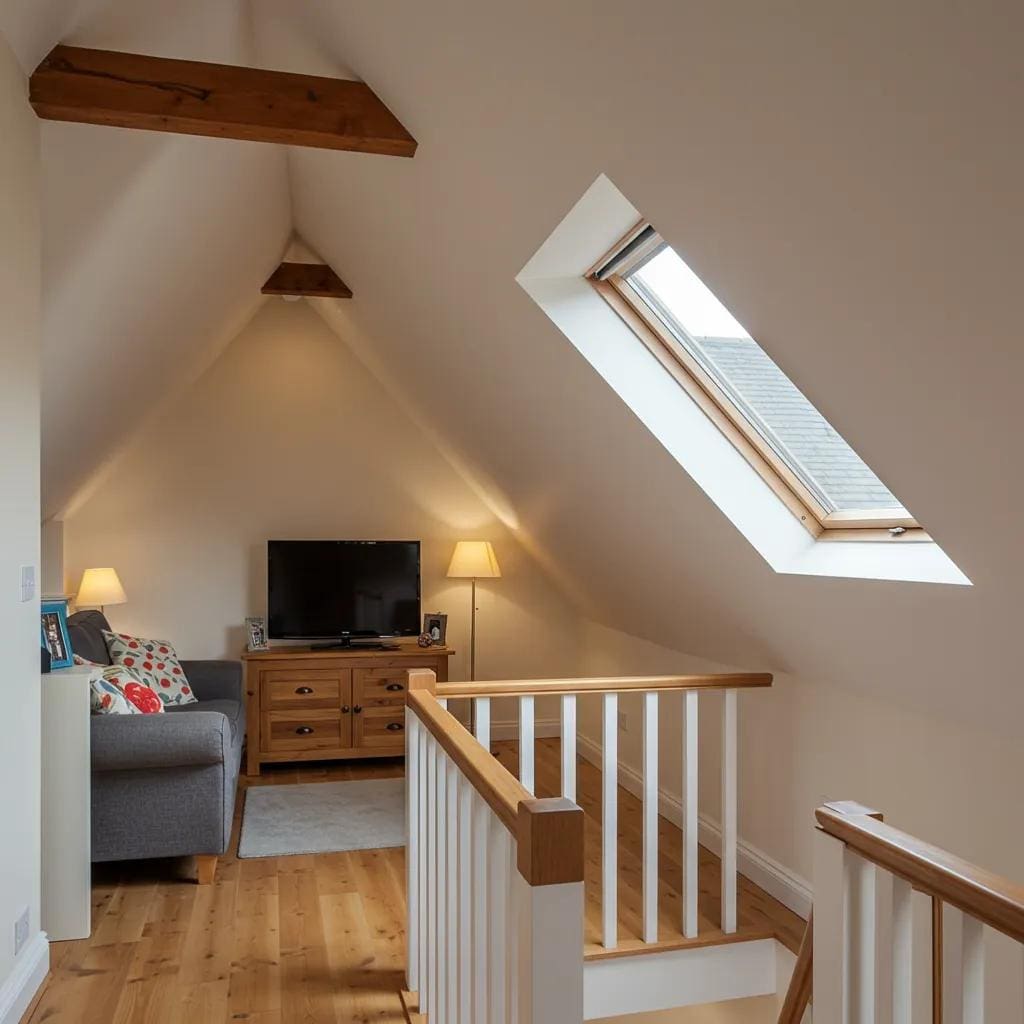Cardiff Home Extensions: Your Guide to Permitted Development Rights and Planning Exemptions
Permitted Development Rights (PDR) in Cardiff simplify minor home upgrades by automatically granting planning permission for specific projects, saving you time and money. With Cardiff property prices averaging £268,000 in July 2025 and planning fees on the rise, understanding these rules can boost your property’s value while keeping you on the right side of the law. This guide breaks down the legal framework for PDR in Cardiff, details the limits for single-storey extensions, loft conversions, and outbuildings, explains when you’ll need full planning permission, explores cost and return on investment, and shows you how to check your eligibility with Cardiff Council. We’ll also cover local specifics like Article 4 Directions and Conservation Areas, and demonstrate how expert advice can smooth the process. Whether you’re aiming to maximise space under PDR or need a Lawful Development Certificate, you’ll find clear explanations, measurement charts, and step-by-step instructions. For personalised support navigating Cardiff’s planning system, get in touch for a free feasibility chat and ensure your project is compliant from the start.
What Are Permitted Development Rights and How Do They Work in Cardiff?
Permitted Development Rights are a national planning permission granted under the Town and Country Planning (General Permitted Development) Order 1995, allowing homeowners to undertake minor works without a full planning application. In Cardiff, PDR are managed by Cardiff Council but stem from Welsh Government policy. This means both national regulations and local policies must align for your project to qualify. Understanding this relationship ensures your extension or conversion meets all legal requirements and avoids potential enforcement action.
What's the Legal Foundation for Permitted Development Rights in Cardiff?
The legal basis for PDR is established by the Town and Country Planning (General Permitted Development) Order 1995 and Planning Policy Wales, which grant specific rights across Wales. Cardiff Council implements these orders locally, interpreting them through its Replacement Local Development Plan (2021–2036). This process ensures that national permissions align with the city’s development goals and heritage preservation efforts.
How Does Cardiff Council Manage Permitted Development Rights?
As the Local Planning Authority, Cardiff Council oversees permitted development by offering Pre-Application Advice, processing applications for Lawful Development Certificates, and enforcing planning conditions. The council’s planning department utilises local policies, such as Article 4 Directions and Conservation Area designations, to modify or restrict PDR where heritage or environmental protections necessitate a full planning application.
What Types of Home Extensions and Conversions Are Covered by PDR?
Under PDR, home extensions can include single-storey rear and side additions, certain two-storey extensions, loft conversions with dormer windows, and outbuildings like garden rooms. Loft conversions into habitable space and minor changes of use (e.g., from office to residential) also fall under PDR, provided they meet specific size, height, and distance criteria.
What Are the Key Rules and Limits for PDR in Cardiff?
Cardiff PDR rules dictate maximum projection, height restrictions, boundary distances, and the need for materials to match the existing home. Single-storey extensions are typically limited to a 4m rear projection for detached houses (3m for others), while two-storey additions usually require planning permission unless they fall within strict volume limits. Materials must visually blend with the existing property to maintain local character.
What Are the Specific Permitted Development Rules for Single Storey Extensions in Cardiff?

Single-storey extensions under PDR allow homeowners to add ground-floor living space without a full application, as long as strict size and location requirements are met. In Cardiff, these projects must adhere to the 4m maximum rear projection for detached properties and 3m for terraced or semi-detached homes, with an overall height limit of 4m. Complying with these rules helps you avoid costly retrospective applications and enforcement notices.
What Are the Maximum Size and Height Limits for Single Storey Rear and Side Extensions?
Rear extensions under PDR can project up to:
- 4 metres from the original rear wall on detached homes
- 3 metres on semi-detached and terraced homes
- A maximum height of 4 metres
These limits are in place to protect neighbour privacy and minimise overshadowing.
When Do Single Storey Extensions Need Building Regulations or Party Wall Agreements?
All single-storey extensions, regardless of whether they fall under PDR, must comply with Building Regulations concerning structural safety, thermal efficiency, and drainage. Party Wall Agreements are necessary if the work is adjacent to a neighbour’s property or involves excavation within 3 metres of a shared boundary.
How Do Conservation Areas and Article 4 Directions Impact Single Storey Extensions?
Conservation Areas and Article 4 Directions can remove certain PDR, meaning even small extensions might require full planning permission. Within Cardiff’s designated heritage zones, council guidelines take precedence over national PDR rights to preserve architectural character and streetscape harmony.
What Are Common Planning Permission Exemptions for Single Storey Extensions in Cardiff?
Some extensions may qualify for exemptions, such as conservatories that are almost entirely glass or works that fall under specific “permitted development examples” for listed buildings, provided prior approval is obtained. Confirming these exemptions with Cardiff Council beforehand ensures clarity before you start building.
When Is Planning Permission Required Instead of Permitted Development in Cardiff?
Planning permission is mandatory when an extension or conversion exceeds PDR limits, is situated within a Conservation Area, or is subject to an Article 4 Direction. Two-storey extensions that go beyond specified height or volume thresholds, and any works on listed buildings, always require a full planning application. Understanding these situations helps prevent project delays and enforcement action.
What Scenarios Require Full Planning Permission?
- Two-storey extensions that exceed the volumetric PDR limits.
- Extensions on properties located in Conservation Areas or subject to Article 4 Directions.
- Any work that alters the roofline of a listed building.
- Changes of use that fall outside the defined PDR classifications.
How Does Cardiff Council’s Local Development Plan Influence Planning Permission Requirements?
The Replacement Local Development Plan (2021–2036) designates areas where PDR might be restricted or entirely withdrawn. Cardiff Council’s plan identifies sensitive locations—such as historic districts and flood-risk zones—where full applications are necessary to ensure thorough assessment.
What Is the Process for Applying for Planning Permission in Cardiff?
Applying for planning permission involves submitting detailed drawings, a Design and Access Statement, ownership certificates, and paying the relevant fee. Cardiff Council typically takes eight weeks to decide on applications, and seeking pre-application advice is recommended to help streamline the approval process.
How Do Lawful Development Certificates Support PDR Compliance?
A Lawful Development Certificate serves as official confirmation that proposed works comply with PDR, providing legal certainty and preventing retrospective enforcement issues. Issued by Cardiff Council, this certificate is often sought before construction begins or when selling a property to demonstrate compliance.
What Are the Permitted Development Rights for Loft Conversions in Cardiff?

Loft conversions under PDR allow homeowners to expand their roof space without needing full planning permission, provided volume increases stay within 40 m³ for terraced houses and 50 m³ for detached properties. Dormer windows are permissible if they meet specific size and placement criteria, ensuring minimal visual impact and respecting neighbour privacy.
What Are the Volume and Design Limits for Loft Conversions Under PDR?
| House Type | Maximum Volume Increase | Roof Alterations Allowed |
|---|---|---|
| Terraced/Semi-detached | 40 m³ | One rear dormer |
| Detached | 50 m³ | Up to two side/rear dormers |
When Are Dormer Windows Allowed Without Planning Permission?
Dormer windows can be built under PDR if they do not extend more than 50 cm above the existing roof slope, do not overlook neighbouring properties, and use materials that match the existing roof. This approach ensures consistency with the original building and minimises potential overlooking issues.
What Building Regulations and Party Wall Agreements Apply to Loft Conversions?
Similar to other PDR works, loft conversions must meet Building Regulations for structural integrity, fire safety, insulation, and staircase design. If the roof conversion involves work on a party wall or is adjacent to a neighbour’s loft space, a Party Wall Agreement is required before commencing work.
How Do Local Restrictions Affect Loft Conversion PDR in Cardiff?
Cardiff’s Conservation Areas and Article 4 Directions can revoke loft PDR, necessitating a full planning application for dormer installations. In these designated areas, the council evaluates design quality and heritage impact to preserve the character of historic streetscapes.
How Do Permitted Development Rights Apply to Outbuildings and Other Home Improvements in Cardiff?
PDR also cover ancillary structures like sheds, garages, and garden rooms, provided they do not exceed 2.5m in height and have a maximum footprint of 50 m². Fences, gates, and driveways may also fall under permitted rights if their materials match the existing property and kerbside drainage is maintained.
What Are the Rules for Sheds, Garages, and Garden Rooms Under PDR?
Outbuildings must be single-storey with a maximum eaves height of 2.5m (3m for dual-pitched roofs). They must be located at least 2m from property boundaries and cannot be built forward of the principal elevation. The total area covered by all outbuildings must not exceed 50 m².
Are Fences, Gates, and Driveways Covered by Permitted Development Rights?
Fences and gates up to 1m high along public highways and up to 2m elsewhere are permitted, as long as they don’t obstruct visibility splays. Driveway surfacing using permeable base materials is allowed under PDR, subject to sustainable drainage requirements.
When Do Changes of Use Qualify for PDR in Cardiff?
Permitted changes of use include converting lofts to living space (C3), changing offices (B1(a)) to residential use, and repurposing agricultural buildings for storage or workspace. Each change must satisfy specific criteria regarding size, parking provision, and impact on neighbours.
How Does Cardiff Council Provide Guidance on Outbuildings and Ancillary Developments?
Cardiff Council offers Pre-Application Advice and publishes local design guides that provide examples of compliant structures, materials, and site layouts. Consulting these resources early on can reduce the risk of enforcement action and clarify application requirements.
What Are the Costs and Value Considerations for Home Extensions Under Permitted Development in Cardiff?
Extensions built under PDR often prove more cost-effective than those requiring full applications, thanks to lower fees and quicker approvals. Average costs for single-storey extensions typically range from £21,000 to £65,000, while two-storey projects can cost between £55,000 and £95,000. Considering the potential increase in resale value, PDR extensions offer a strong return on investment.
What Are the Average Costs for Single and Two Storey Extensions in Cardiff?
Construction costs can vary based on the project’s scale and specifications.
- Single-storey: £21,000–£65,000
- Two-storey: £55,000–£95,000
The final budget can be influenced by the choice of finishes and the complexity of structural alterations.
How Do Planning and Building Control Fees Affect Extension Projects?
While PDR projects bypass planning application fees, they still incur Building Control charges, which typically amount to 0.4–0.6 percent of the construction costs. Obtaining a Lawful Development Certificate may also involve a separate council fee, usually around £100–£200.
What Is the Potential Return on Investment for Extensions Using PDR?
Well-executed extensions under PDR can add between 10–20 percent to a property’s value. A single-storey rear extension, for instance, often results in a 15 percent value uplift, making permitted development projects highly cost-effective.
How Can Expert Advice Maximise Development Potential Within PDR Limits?
Specialist planning consultants and architects can assess site constraints, optimise designs to fit within PDR thresholds, and prepare Lawful Development Certificate applications. Engaging experts early ensures your project fully leverages permitted rights while avoiding costly revisions down the line.
How Can Homeowners Check Their Eligibility for Permitted Development Rights in Cardiff?
To confirm your eligibility for PDR, you’ll need to review national regulations, Cardiff Council’s specific policies, and any local conservation designations. Homeowners should follow a clear process to verify if their proposed works fall within permitted limits and to secure any necessary certificates.
What Steps Are Involved in Checking PDR Eligibility with Cardiff Council?
- Review the relevant General Permitted Development Order for Wales.
- Consult Cardiff Council’s Local Development Plan maps to identify any Article 4 Directions or Conservation Areas.
- Submit an application for a Lawful Development Certificate if you are uncertain about your project’s eligibility.
How to Apply for a Lawful Development Certificate in Cardiff?
Applicants are required to submit detailed site plans, elevations, section drawings, and a written description of the proposed works. After paying the fee, Cardiff Council will issue a decision within eight weeks, confirming PDR compliance or outlining any required permissions.
Are There Interactive Tools or Resources to Assess PDR Compliance?
Cardiff Council’s planning portal features map-based tools that highlight local restrictions. Third-party PDR calculators can offer initial checks on volume and dimensions, although professional advice remains the most reliable method.
When Should You Contact Planning Consultants for PDR Advice?
It’s advisable to engage specialist consultants when your project is close to PDR limits, involves heritage considerations, or requires complex volumetric calculations. Early consultation minimises risks, speeds up approvals, and helps maximise your development potential.
Permitted Development Rights in Cardiff provide a more straightforward path for home improvements, but strict conditions and local policies require careful attention. By understanding national rules, Cardiff Council’s oversight, and specific project limits, homeowners can save both time and money while increasing their property’s value. If you’re unsure, a Lawful Development Certificate offers legal assurance and peace of mind. For expert advice tailored to your specific project, contact us to discuss your plans for an extension, conversion, or outbuilding, and ensure full compliance with Cardiff’s planning framework.




